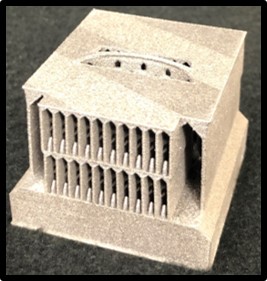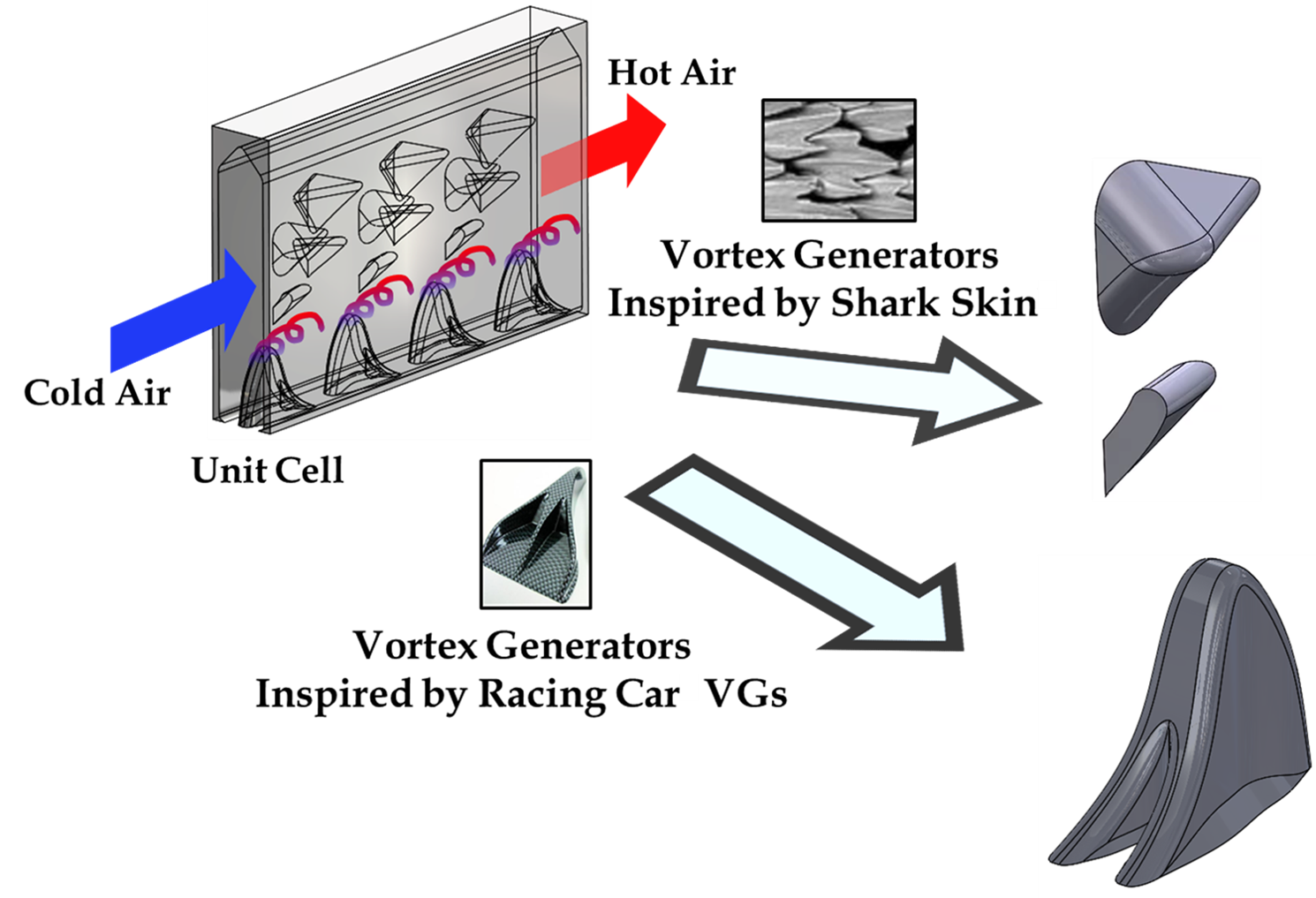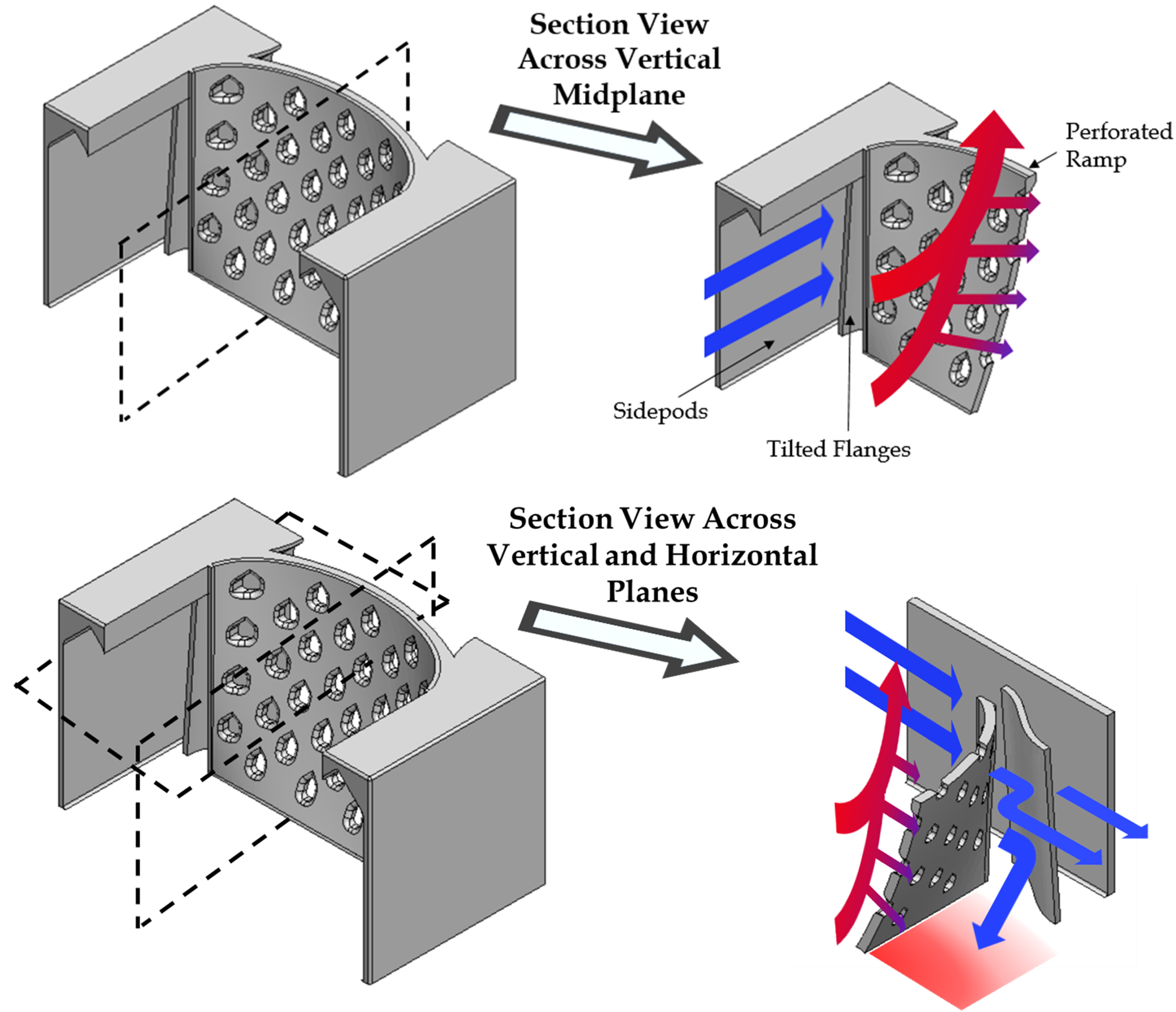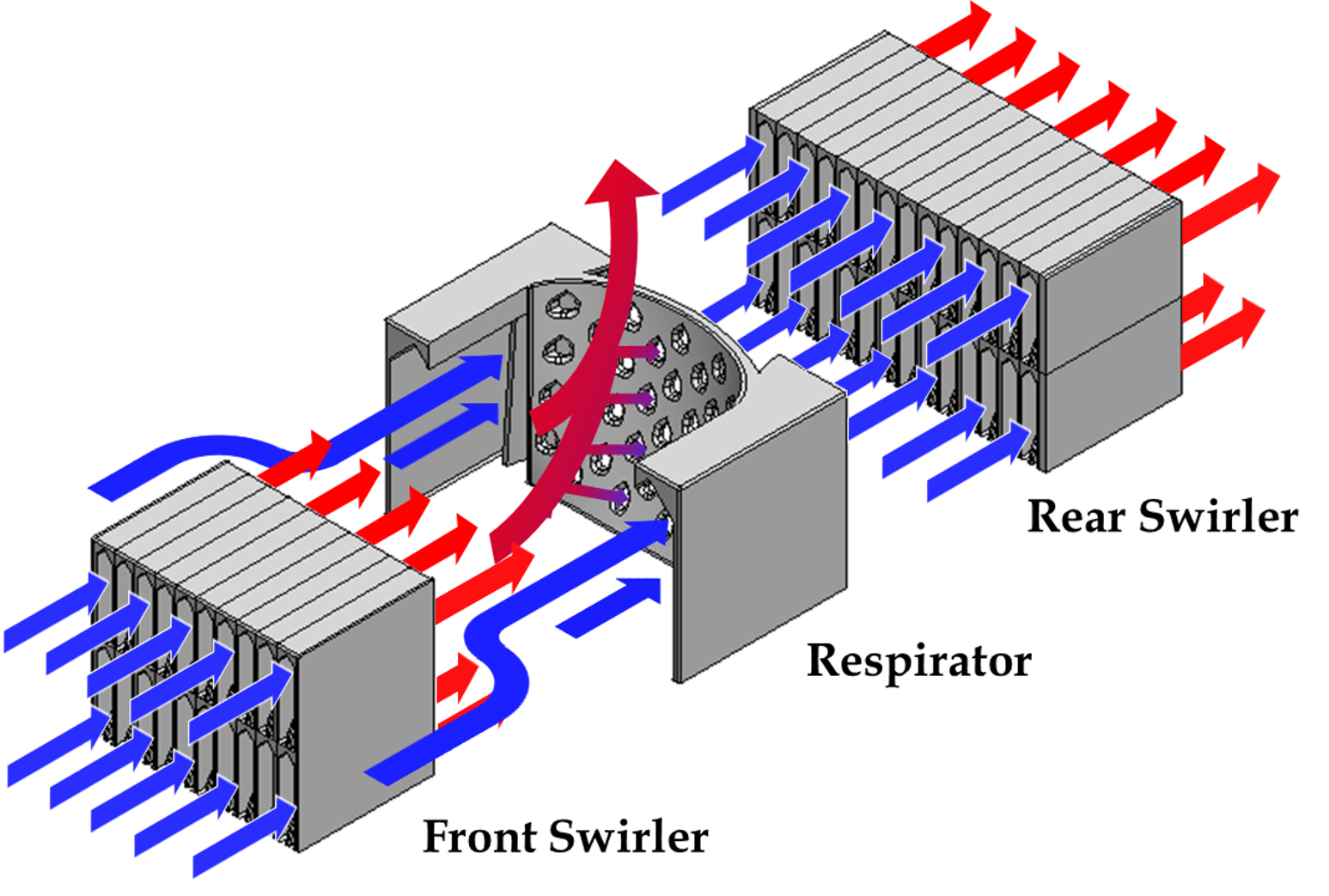The ITherm design challenge is a global student competition forms part of annual IEEE Intersociety Conference on Thermal and Thermomechanical Phenomena in Electronic Systems.
Now in its third cycle, the challenge is proudly sponsored by GE Global Research and supported by GE Additive's AddWorks team who work with the top six teams to additive manufacture their designs in aluminum on a GE Additive Concept Laser M2 machine.
Last week a team from Purdue University presented its heat sink design “The Tempest” to edge out six other finalists to win this year’s competition.
We caught up with the Purdue Panthers (Soumya Bandyopadhyay, Saeel Pai, Julia Meyer, Adeline Naon), team mentor, research associate professor Justin Weibel, and Amy Marconnet - both a judge and committee member of ITherm 2020 and also an associate professor of mechanical engineering at Purdue to find out more.
From L-R: associate professor Amy Marconnet (student design challenge committee co-chair, Purdue University), Soumya Bandyopadhyay, Saeel Pai, Julia Meyer and Adeline Naon – the Purdue Panthers, Purdue University, and their mentor research associate professor Justin Weibel, Purdue University
Every year the ITherm design challenge is always - pardon the pun - hotly contested. What makes this design competition attractive to student teams?
Amy Marconnet: This competition combines many aspects of engineering including design, materials, and transport phenomenon (heat transfer and fluid flow).
We’ve had competitors ranging from mechanical engineers whose interests are sparked by the heat transfer aspects, to material scientists who are intrigued by the application of the additive manufacturing technique.
Overall, being able to see the designs come “off the page” has been a major draw for competitors.
Purdue Panthers: Recent advances in electronic devices have resulted in innovative thermal management technologies within the realm of conventional manufacturing.
However, as the demand for high-performance electronics across all form-factors increase, there exists an impetus to ensure superior performance and enhanced user experience by designing innovative cooling solutions, within the device constraints.
The design competition involves a lot of creative thinking and ingenuity from the students to aptly exploit the scope of additive manufacturing, while simultaneously ensuring superior performance. The participation of teams from different corners of the world fosters a conducive environment to learn from the participating teams and interact with budding professionals from varied backgrounds.
In the 2020 cycle of the competition, there were six finalists (Purdue, Georgia Tech, Penn State, Oregon State, and two teams from UT Arlington). We, the Purdue Panthers represented Purdue University in this heavily contested competition and emerged as winners.

“The Tempest” Image credit: Oregon State University & GE Additive
COVID-19 meant that the challenge shifted to the virtual world this cycle. What were some of the challenges and learnings from a judging perspective, but also from a team perspective?
Amy Marconnet: From the judging perspective, one of the goals of the heat sink competition is to introduce students to the thermal and electronics packaging community. The final step of the competition typically brings students to the conference to give in person presentations to an audience of engineers and scientists from the community.
This year, when things shifted virtual, we weren’t sure how the conference would work and had to switch to having students prepare video presentations about their work. Ultimately, this was a great success: over 100 members of the ITherm community logged in, watching the videos simultaneously, and participating in virtual Q&A with the students.
Purdue Panthers: From a team perspective, COVID-19 impeded in-person meetings and discussions, necessary for this competitive design challenge. So, we remained connected via virtual conferencing tools and be efficient with the available resources amidst these difficult times.
We had specific goals and set targets within the stipulated timeframe. We were not only motivated and passionate to push our limits, but also used to back up each other in tough situations.
The team sincerely believed in one motto: “Your limitation – it is only your imagination”. This experience taught us to be resilient amidst the tough times and be united and work sincerely towards achieving the desired goal.
Image credit: Purdue Panthers, Purdue University
The winning design from Purdue University takes its inspiration from both the natural world and the human body. Can you tell us first about sharkskin and denticles?

Inspiration from the natural world. Image credit: Purdue Panthers, Purdue University
Purdue Panthers: Sharkskin features microscopic teeth-like projections called denticles, which reduce drag in the water. We designed structures, motivated from these shapes onto the wall of their heat sink to minimize pressure drop and the electricity expenses. Furthermore, these structures induce air mixing and significantly enhance the heat transfer rate. Consequently, our heat sink (“The Tempest”) outperformed the other designs and won the competition!
And the team also looked at human lungs to inform the design of the respirator. Why is that?

Inspiration from Human Lungs. Image credit: Purdue Panthers, Purdue University
Purdue Panthers: As air flows through a heat sink, its temperature rises, and it loses its capability to take up heat. Consequently, one of the key factors behind the performance of any heat sink is the continuous supply of fresh and cold air and exhaust of warm heated air.
Hence, the heat sink requires “lungs” similar to the human respiratory system that performs continuously by allowing the exchange of air with the atmosphere. Thus, the human lungs led to the inception of the concept of Respirator. The Respirator is designed to breathe in cold air from the outside and expels the heated air outside through a perforated ramp, having vents analogous to the air sacs found in the human lungs.
Consequently, the heat sink receives colder air continuously throughout the time of operation and dissipates heat efficiently.
Team collaboration has clearly been key to the win. How did you approach this and how did you have to pivot during the COVID-19 pandemic?
Purdue Panthers: We were aware of this prestigious competition, and we started building the team at the beginning of 2020. One of the fundamental aspects behind building this team was to bring together people who can fearlessly think outside the box, thereby generating a plethora of diverse creative ideas.
Having creative ideas from different individuals built a strong foundation towards envisaging and developing a product. Furthermore, the team thrived on individuals who were ready to step up in difficult situations during the COVID-19 pandemic and take responsibility. At every stage of the competition, every team member pushed boundaries, and ultimately this drove the team to the pinnacle.
How were the heat sinks designed and their performance evaluated?
Amy Marconnet: Each year the competition has three phases. The first phase involves the students using computational tools of their choice to design a heat sink to meet the design requirements. They write up their design procedure and predicted performance in a short white paper that is reviewed by a panel of experts from the ASME K-16 and IEEE EPS community. The top 8 designs are selected and in phase two, engineers from GE work with the teams to make sure their designs are printable and then print these designs. Professor Joshua Gess and his students at Oregon State University then test the eight designs on a standardized test bed. Each year then roughly five teams are selected to participate in the final phase - live presentations about their work, also evaluated by a panel of experts.
Even with the COVID-related shutdown, we were able to complete the testing in the lab following appropriate safety guidelines, but computer simulations are a key step in this process.
Costs for experiments rise quickly and the design space for heat sinks is infinite. One of the most interesting parts of the competition is to see the vastly different designs that come from the students. With computer simulations, students can evaluate a range of designs and optimize design parameters.
With the advent of machine learning, some teams have used advanced computational tools to go beyond engineering intuition, screen a massive number of design options, and arrive at truly unique designs.
Purdue Panthers: We had a two-step design strategy. First, we employed fundamental engineering principles to guide the design and narrow down the parameters. Next, we used engineering design platforms to evaluate its performance and optimize the design.
This strategy simultaneously reduced the time to design the heat sink and lowered the computational cost by a significant factor. Thus, we not only were able to incorporate intricate features inside the heat sink but also, we could rigorously optimize the design within the limited time frame, using minimal resources.
Moreover, the feedback received from the engineers in GE Additive was crucial as we were heading towards the final stages of the competition. Finally, our heat sink was not only successfully manufactured by GE but also, when tested, it displayed superior performance.
What excites you most about the potential for additive manufacturing?

Schematic: Air Flow Through Heat Sink. Image credit: Purdue Panthers, Purdue University
Amy Marconnet: Two aspects of additive manufacturing are of interest to me and my research. First, additive manufacturing enables designs that we cannot create with conventional manufacturing. One of the metrics we consider in judging the designs is the “best use of additive manufacturing.”
We don’t want to see designs that could be made with conventional techniques. The unique design created by Purdue scored highly on this category leveraging combinations of features that would not be possible without additive manufacturing.
Secondly, additive manufacturing enables custom designs for specific use cases and customers. In this competition, each year we’ve had different design constraints and each year the winning design is different. Translating this to the real world, we can design components to meet specific requirements and we can make “one-off” prototypes without needing to create specialized tooling and machining processes.
Purdue Panthers: Additive manufacturing opens up an horizon of opportunities when it comes to designing an engineering product. It impels innovation and eases the adoption of natural and high-performance technical marvels, even on the smallest scale. Therefore, additive manufacturing was a crucial factor behind the manifestation of several creative ideas that we had in mind while designing the heat sink.
What advice would you give to future teams and competitors?
Amy Marconnet: Start early and be creative! The white papers are evaluated not only on the performance figure of merit, but also on the design process and the use of additive manufacturing. We’re looking for teams that use their engineering skills and creativity to create unique, high performance designs. Details the 2021 competition will be announced in the next few months on the ASME K-16 website. To get that early start, if you are interested in participating in the competition as a student or faculty mentor, or serving as a white paper judge, please fill out this form and we will get you the information as soon as it is available.
Purdue Panthers: Be innovative and never give up till the end!
Joe Hampshire, product strategy leader at GE Additive AddWorks commented, “Our team this year, Bill Schneider, Mark Fuller and Jordan Tesorero loved being involved with the competition. Every year I’m blown away by the creativity and design engineering thinking by this talented, next generation of additive engineers and materials scientists. And of course, being a Purdue alum myself, I’m super proud of the Panthers’ achievements.”
Click here to contact the GE Additive AddWorks team